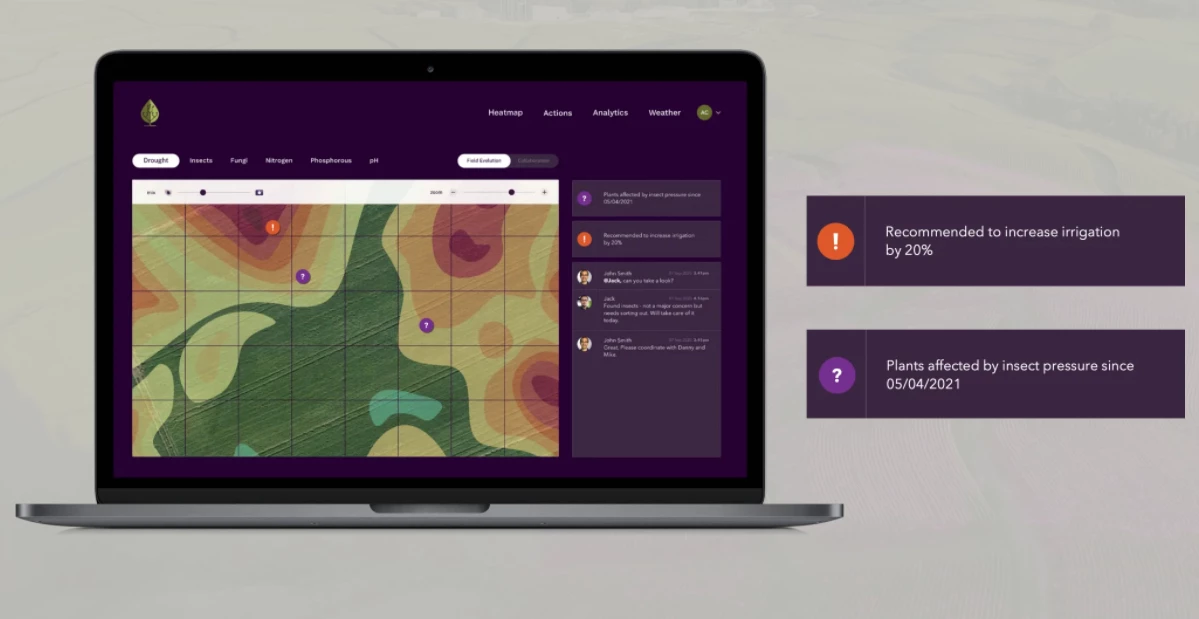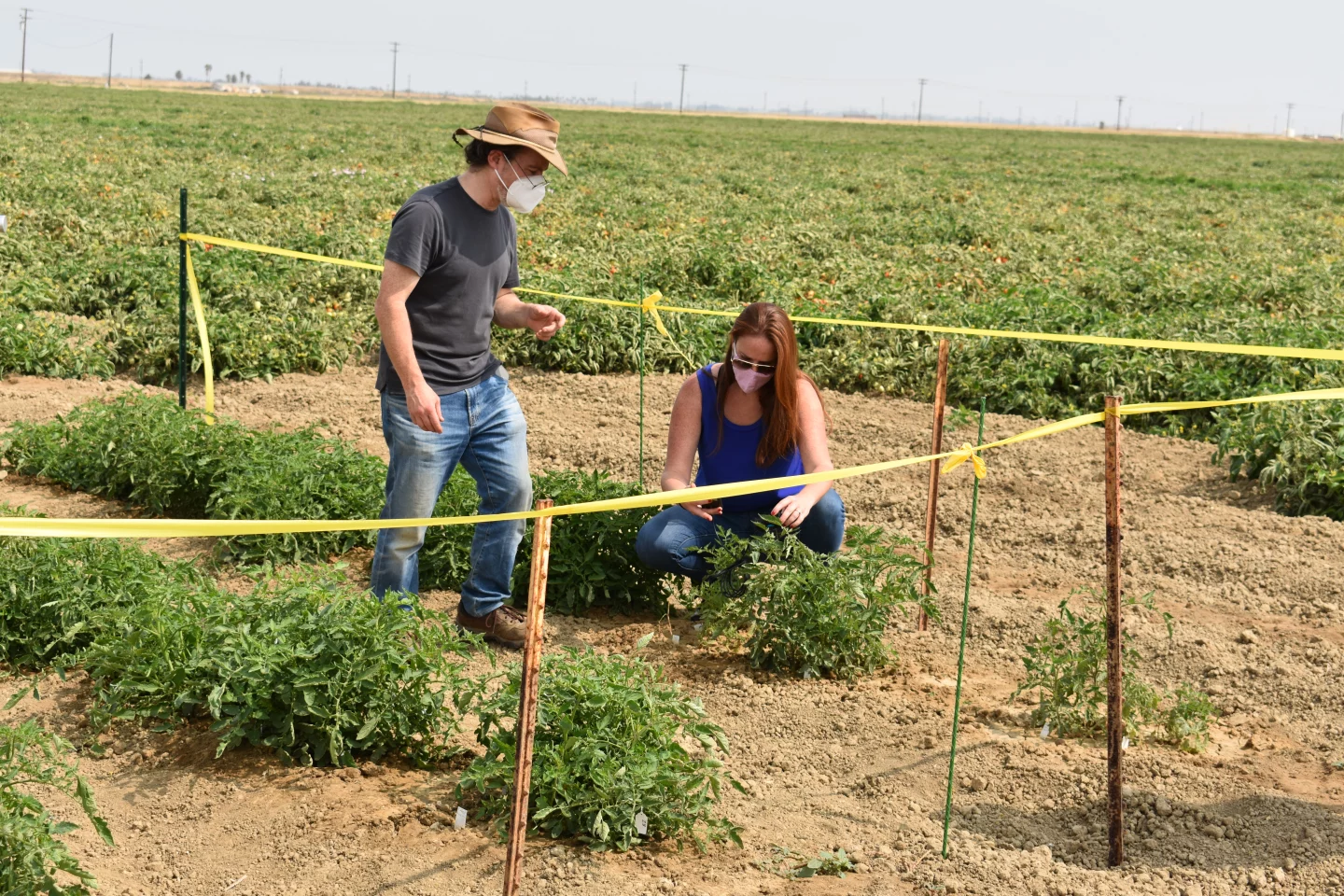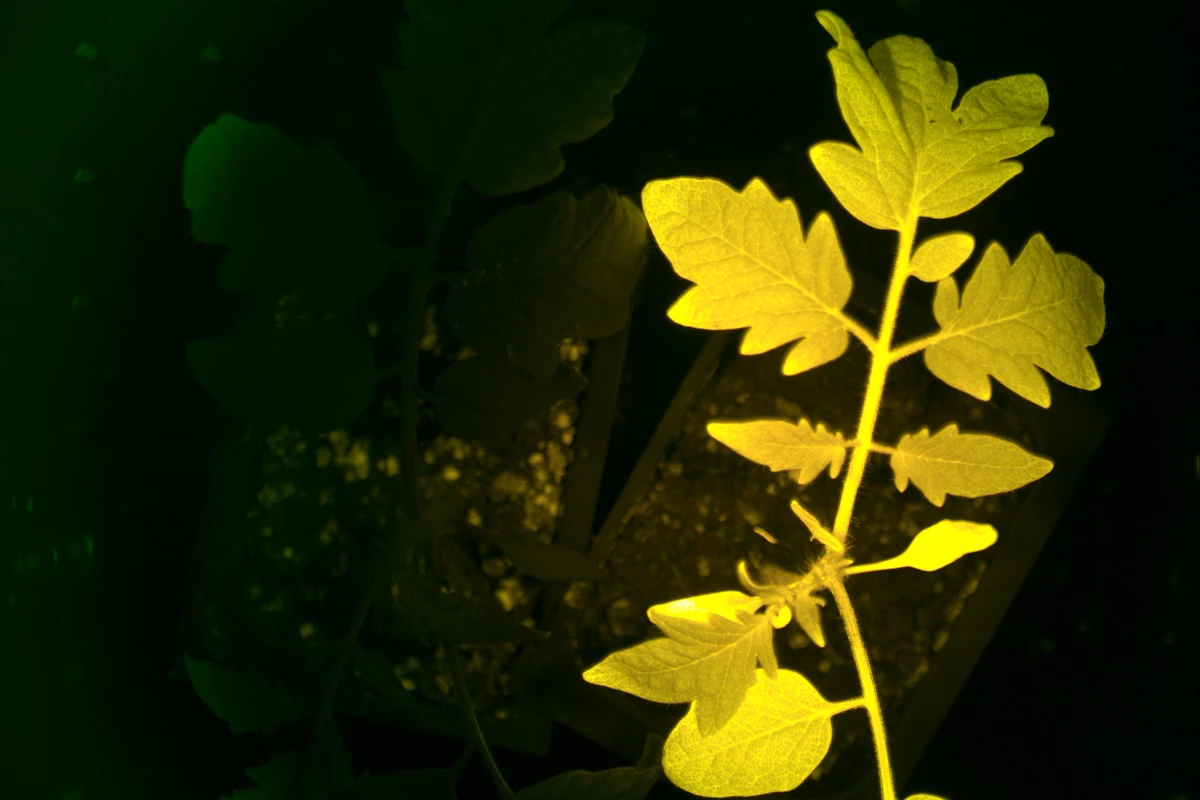It can be difficult for farmers to determine exactly when their crops need watering, or when they're getting infested with bugs or fungus. InnerPlant technology was created to help, by getting the plants to "glow" when they're in distress.
Ordinarily, farmers irrigate their crops on a set schedule – the same goes for the application of fertilizer and pesticide.
While this does allow the farmers to stay proactive, it also means that they're using up water, fertilizer and pesticide when they don't necessarily have to. As a result, not only are they spending more money and working harder than is required, but they're also needlessly introducing eco-unfriendly chemicals into the environment.
That's where InnerPlant is intended to come in.
The technology is centered around crop plants that have been genetically engineered by the California-based InnerPlant company. When those plants are in the earliest stages of stress, they produce fluorescent proteins. These aren't visible to the naked eye, but they can be imaged by special cameras on satellites.
Depending on the color in which they fluoresce (there are three), it's possible to tell if the plants are beginning to suffer from lack of water, the presence of pathogens, or a nutrient deficiency. Farmers will be able to access this data via an online portal, then take the appropriate action.

InnerPlant has already produced a fluorescing tomato plant – named the InnerTomato – which is currently being tested in fields in California. The firm is also working on a soya plant, and it plans to develop other crops in collaboration with industry partners. As to what those other crops will be … well, they have to be widely-grown enough to make it worth the initial investment by the company.
"The benefit with a technology like ours is that once the whole R and D part is behind you, it's incredibly cost-effective," CEO Shely Aronov tells us. "The downside is the development cycle, the cost of that."
She adds that the seeds shouldn't be any more expensive than those of regular crops, and that the plants themselves should be much like their conventional counterparts in terms of factors such as growth rate, hardiness and yield. Such has historically not been the case with some other experimental crops, which were genetically manipulated in order to boost their resistance to pests and disease.
"The way resistancy traits work is that they're activating something in order to create a resistancy, and that is happening all the time, so you're taking energy away from the plant that it could have used to grow," she says. "With us it's different, our 'sensors' are only on when there's a problem. So if there's no problem, there's going to be no cost of that additional trait."
In fact, Aronov and colleagues are about to explore that notion further by assessing the yield of InnerTomato plants that have been specially engineered to be "always on" – in other words, they will be continuously producing the fluorescent protein, regardless of their growing conditions.

Depending on the regulatory hurdles to be crossed, the regular version of the InnerTomato may be available to farmers within a year – if the company decides to commercialize it. A recent investment by Japan's MS&AD Ventures should certainly help that to happen. The soya plant could hit the market a year after that.
"We haven't had any significant innovations in large-scale agriculture for the last 20 or 30 years," says Aronov. "It's time to do something new."
Company website: InnerPlant





